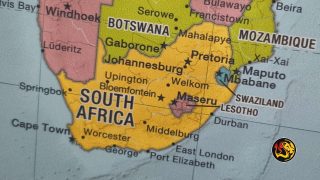South Africa Floods Kill 440 Raising Questions

By Stefan J. Bos, Chief International Correspondent
DURBAN, SOUTH AFRICA (Worthy News) – South Africa on Monday tried to overcome storms that devastated the east coast city of Durban, triggering heavy floods and landslides, killing more than 440 people.
The area was hit by more rain over the weekend after the deadliest storm to strike the country in living memory already killed hundreds and left tens of thousands homeless.
Last week floodwaters engulfed parts of the southeastern coastal city of Durban, ripping apart roads, destroying hospitals, and sweeping away homes and those trapped inside.
Emergency services in the southeastern KwaZulu-Natal (KZN) province, where Durban is located off the Indian Ocean coast, were on high alert.
Questions are raised about why so many people died in storms in South Africa, the continent’s most industrialized country. Durban is one of South Africa’s fastest-growing cities, with economic growth outpacing the national average by 2015.
Experts say that massive unplanned migration created housing shortages, which resulted in the mushrooming of shack dwellings, locally called informal settlements. Poor facilities apparently contributed to the death toll.
EXCLUSIONARY IN NATURE
“The ways in which South African cities were designed were very exclusionary in nature,” said planner Magidimisha-Chipungu. “The spatial planning and the apartheid legacy” left many Blacks segregated. They “are the urban poor in the periphery and the low-lying areas” along riverbanks, she added.
Around a quarter of the Durban metro’s 3.9 million people live in 550 informal settlements around the city. At least 164 of them were built on floodplains, according to authorities.
Durban is built on a hilly area with many gorges and ravines — a topography that University of KwaZulu-Natal urban planner Hope Magidimisha-Chipungu says is conducive to floods.
If the soil is not properly “stabilized in the hilly areas, it’s obvious you will have landslides,” she said.
Some have suggested Durban’s storm-water drainage system may not have been well maintained, which authorities of the 187-year-old city dispute.
Meteorologists say the rains that came with the storm were part of a typical South African weather system called a “cut-off low,” which can bring heavy rain and cold weather.
CUT-OF LOW
“Cut-off low-pressure systems are common. Their frequency becomes high during autumn and spring seasons, and they differ in strength,” said Puseletso Mofokeng with the South African Weather Service.
Some of these events are very intense, causing heavy rain, hail, strong and potentially damaging winds, and heavy snowfall.
A cut-off low in April 2019 reportedly killed 85 people in Eastern Cape and KwaZulu-Natal provinces. If the storm system itself is a known phenomenon, the difference this time was the intensity of the deluge.
Several experts blame climate change and claim that warmer seas charge the atmosphere with more moisture, which gets dumped as rainfall. “We’ve seen in Durban three (severe) floods in less than ten years. Does it have to do with climate change? Definitely,” said Mary Galvin of the University of Johannesburg.
“We are feeling the impact of what will certainly be unpredictable, more frequent, severe, and extreme weather events.”
Skeptics have raised doubts. Yet a recent United Nations report said what was once a one-in-a-hundred-year flood event could happen several times a year by 2050.
As rescue and recovery efforts continue, the government announced one billion rand ($68 million) in emergency relief funding. Confederation of African Football (CAF) chief billionaire Patrice Motsepe also donated what he called a “humble contribution” of 30 million rand ($2.0-million, 1.9 million euros).
If you are interested in articles produced by Worthy News, please check out our FREE sydication service available to churches or online Christian ministries. To find out more, visit Worthy Plugins.
